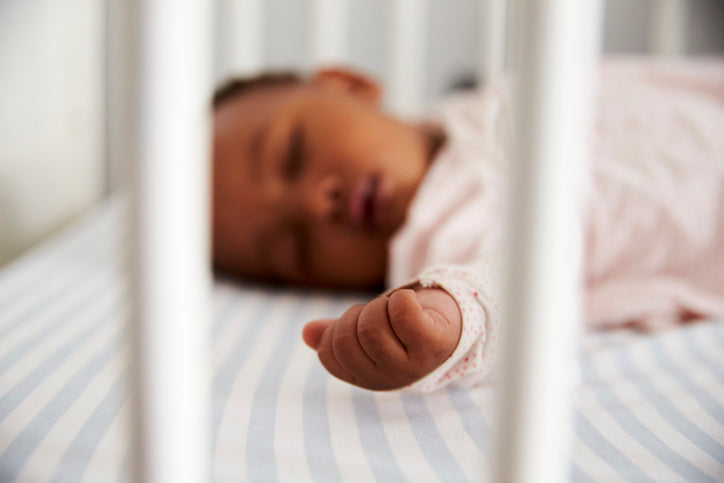
Tips for Successful Overnight Cloth Diapering without Leaks
|
|
Time to read 3 min
|
|
Time to read 3 min
Once babies start sleeping through the night, families often struggle to figure out a good overnight cloth diapering set up. Day time cloth diapering is more approachable because you’re changing your baby's diaper often, every 2 hours or so. But overnight cloth diapering can be intimidating—the diaper has to work really hard to keep your child dry and comfortable for eight to twelve hours. It’s a tough job for any diaper.
Stop those stubborn night time leaks in your baby's reusable cloth diaper by following these troubleshooting tips.
Sometimes too much absorbency can cause the reusable cloth diaper to have a poor fit which can lead to unexpected leaks when overnight cloth diapering. If you find that the added bulk of night time absorbency or inserts is preventing the diaper from sitting in baby’s underwear line properly you may need to adjust the style of absorbency you are using or how you are placing it in the diaper.
When using a pocket style cloth diaper for overnight cloth diapering, we recommend splitting bulky absorbency so that some of the absorbency is inside the pocket and some sits against your baby's skin, on top of the lining of the diaper. This will allow the elastics to nestle into baby’s underwear line and provide a better fit.
You may also find that you need to adjust the rise setting of your overnight cloth diapers to be a size bigger than your baby's daytime cloth diaper setting to accommodate the added absorbency of the overnight diaper.
You can email help@kinderdiapers.com at any time for cloth diaper fit help.
When families reach out to Kinder because they are experiencing persistant overnight cloth diapering leaks, one of the first things we talk about is increasing absorbency.
How do you know if you need more absorbency when overnight cloth diapering?
When checking baby's diaper in the morning, if the inserts are fully saturated—there is no remaining dry area at either end of the absorbency—it is time to increase the amount of absorbency you are using. Consider adding one additional insert to start when increasing absorbency for overnight cloth diapering.
This will look different for every family but often this can be as simple as adding one more 4-layer bamboo or hemp cotton insert to your child's overnight diaper. Often you don't need as much extra absorbency as you think.
For families with older toddlers who experience frequent nighttime urination, rather than bulking the absorbency in your child's overnight cloth diaper, it may be beneficial to limit beverage intake within one hour of bedtime. This practice can help ensure that the bladder is adequately emptied before the child lies down for the night.
For families with really heavy overnight wetters, pocket diapers may not be the best choice for overnight cloth diapering. In these cases, we often recommend something like a flat or fitted style of diapers.
Both of these styles of cloth diapers offer the unique benefit of 360 degrees of absorbency. This can be very beneficial for families that experience frequent leg leaks while overnight cloth diapering.
Flat diapers are very versatile. You can fold them a number of different ways to customize where the bulk of the absorbency sits to meet your baby's unique diapering needs. And if you find that you don't like the flat style of diaper, you can always pad fold it to use as an insert in diaper cover or pocket style diaper.
A fitted diaper also offers 360 degrees of absorbency and is great for overnight wear. A fitted cloth diaper is a type of reusable diaper that is designed to fit snugly around a baby's body, providing high absorbency and leak protection. Unlike flat or prefold diapers, fitted diapers have elastic around the legs and waist, ensuring a secure fit that prevents blowouts. They are typically made from absorbent materials like cotton, hemp, or bamboo, making them effective for heavy wetters.
Fitted diapers and flat style diapers are not water resistant and do need to be paired with a reusable diaper cover when worn for overnight cloth diapering.
Remember that it's normal to have occasional leaks in your child's cloth diapers, especially as your baby grows and their bodies and needs change. Be patient and don't be afraid to adjust your approach as needed.
If you're feeling defeated and need more help consider joining our discord community. The Make Cloth Mainstream Discord includes channels about cloth diapering help, fit checks, and more.
